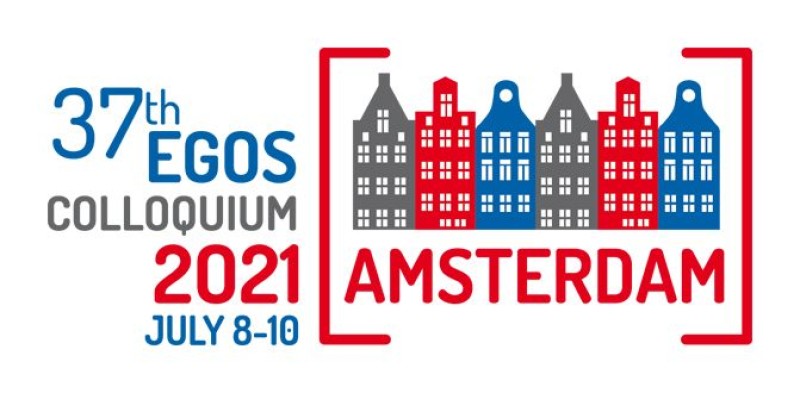Sub-theme 07: [SWG] Meaning and Social Networks within and between Organizations
Call for Papers
The predominance of structuralist over connectionist approaches to social network research has limited the study of culture
and meanings as emerging from – but also affecting – social interaction processes among individuals or group constituencies,
such as organizations. Much empirical research has tended to focus either on social structure or on the material content of
social interactions within and between organizations (Ferguson et al., 2017).
Recently, however, there has
been a surge of interest in understanding the dual relation between meaning and social networks (Pachucki & Breiger, 2010)
to achieve a more complete explanation of organizational processes and behaviors. This substantial interest has also been
sustained by the increased availability of large dataset and digital sources, as well as recent and rapid developments in
data analysis and modelling techniques which has made the investigation of the interdependence between social and meaning
networks in organizational research more feasible (Basov & Brennecke, 2017; Moser et al., 2017; Mohr & Bogdanov, 2013;
Wagner-Pacifici et al., 2015).
By relying on a definition recently proposed by Moser et al. (2017), meaning
is the tacit flow that may include intents, feelings, signs and value that is exchanged, shared in and perceived through ties
by two or more individuals within a network. Meaning may emerge directly from the actual content of a tie – for example, the
communication flow between two individuals. Or it may emerge from the identity of partners in a relationship – where the meaning
assigned to a partner may depend on the availability of alternative partners, or the dependence of a partner on another. Issues
of meaning and interpretation are tightly coupled in the analysis of social networks (Podolny, 2001).
The
study of how meaning and social networks interact and affect each other requires an integrated research design approach that
makes use of tools and technologies for the collection of data on organizational interactions and processes, as well as the
use of analytical methods for the formal analysis of meaning and meaning structures emerging from such interactions (Fuhse
& Mützel, 2011; Mika, 2005; Breiger & Puetz, 2005; Mohr, 1998).
We welcome short paper submissions that advance our understanding of the interplay between meaning and social networks within and between organizations by bringing together theoretical and/or empirical contributions that:
Show how social and meaning networks are intertwined, and how this matters for organizations
Focus on the meaning of social relationships for a more comprehensive explanation of organizational processes and behavior
Show the use of analytical approaches for the collection, mapping and analysis of meaning and meaning structures embedded in networks within and between organizations
Emphasize interpretive processes underlying the dynamics of social networks
Analyze the meaning of network mechanisms (such as reciprocity, transitivity, etc.) for the actors involved
Reveal how meaning is socially contracted through networks
Examine how relational signals are interpreted and translated into actions and behavior
References
- Basov, N., & Brennecke, J. (2017): “Duality beyond dyads: Multiplex patterning of social ties and cultural meanings.” Research in the Sociology of Organizations, 53, 87–112.
- Breiger, R.L., & Puetz, K. (2015): “Culture and networks.” In: International Encyclopedia of the Social & Behavioral Sciences, 2nd edition. London: Elsevier, 557–562.
- Ferguson, J.E., Groenewegen, P., Moser, C., Borgatti, S.P., & Mohr, J.W. (2017): “Structure, content, and meaning of organizational networks: Extending network thinking.” Research in the Sociology of Organizations, 53, 1–15.
- Fuhse, J., & Mützel, S. (2011): “Tackling connections, structure, and meaning in networks: Quantitative and qualitative methods in sociological network research.” Quality & Quantity, 45 (5), 1067–1089.
- Mika, P. (2005): “Ontologies are us: A unified model of social networks and semantics.” In: Proceedings of the International Semantic Web Conference, 522–536.
- Mohr, J.W. (1998): “Measuring meaning structures.” Annual Review of Sociology, 24 (1), 345–370.
- Mohr, J.W., & Bogdanov, P. (2013): “Introduction – Topic models: What they are and why they matter.” Poetics, 41 (6), 545–569.
- Moser, C., Groenewegen, P., & Ferguson, J.E. (2017): “Meaning in organizational networks–From social to digital and back.” Research in the Sociology of Organizations, 53, 211–229.
- Pachucki, M.A., & Breiger, R.L. (2010): “Cultural holes: Beyond relationality in social networks and culture.” Annual Review of Sociology, 36, 205–224.
- Podolny, J.M. (2001): “Networks as the pipes and prisms of the market.” American Journal of Sociology, 107 (1), 33–60.
- Wagner-Pacifici, R., Mohr, J.W., & Breiger, R.L. (2015): “Ontologies, methodologies, and new uses of big data in the social and cultural sciences.” Big Data & Society, 2 (2), 1–11.


